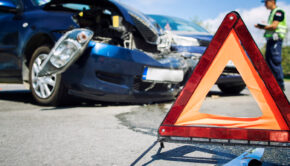Can you sue a toy manufacturer for an injury to a child?
With the way toy manufacturers are set up in their production process, a toy with a defect getting through is an inevitability. No matter how much effort is put into it, it is likely to happen eventually. Some defects are innocuous, some are caught before they can make it out to the market, some are anything but innocuous and terribly unsafe to play with, and some are knowingly dangerous and allowed to go on the market because it would be unprofitable to scrap the defective items.
Whether it is a matter of willful disregard or incompetence, many a parent who has had a child be injured or killed because of a defective toy asks whether the toy manufacturer is liable for the harm that their child has suffered, and whether a lawyer can help set up such a lawsuit in the first place.
Under what circumstances are toy manufacturers liable for injuries from their products?
Determining liability relies on multiple factors. For one, the first thing you need to figure out is what exactly was responsible for the injury happening. For example, was it a matter of a choking hazard? Did the child get burned? Did their hair get caught in some part of the toy’s mechanism? Once that’s determined, you then have to determine whether the toy manufacturer accounted for that. Toy manufacturers typically go through rigorous testing to ensure that their products meet certain safety standards.
Toys with small parts that a child could eat, for example, are marked as being a choking hazard, and advise against allowing a child of a certain age from having access to it (ages three and under are particularly advised against it in many cases). If the packaging or toy itself explicitly points out the risk of choking associated with it, you are not likely to see the toy manufacturers be found liable, as the ruling will likely declare that they did their due diligence to make sure that choking hazard warnings are made available. An important factor to consider too, however, is that the product needs to be safe for normal, expected use. That is, if a toy is marketed in such a way (or has no advisory against this way), and the child sustains injuries by playing with the toy in that way, it could lead to the toy manufacturer being held liable regardless.
Liability goes beyond stuff that most toy manufacturers have to worry about, however. It can also relate to defects, to where the item is defective in such a way that it leads to injuries. For example, an incident occurred in Katy, Texas, where the remote control for a radio-controlled car caught fire while it was hooked up and charging.
Now, obviously, charging your RC car’s remote control would be considered normal use, so the fact that it caught fire like that was a pretty clear and evident failure in the design process. Even if there was a warning that it may catch fire, not many would see that as due diligence, as consumers have an expectation that spontaneous combustion is not going to be a risk.
The biggest issue when it comes to liability for toy manufacturers is determining what they knew about the defect before it reached store shelves, if anything. Defective products cause serious injuries, so a toy manufacturer has to be mindful that their products are put through the ropes. In some cases, however, the toy manufacturers were found to have known about the defect, yet ignored the problem, even when a child has died. Mega Blox produced Magnetix, a magnet-based toy, which resulted in the death of a small child after the magnets fell out and became ingested, damaging their insides. Yet, Mega Blox waited months to pull the toys from store shelves, and in that time, 15 more children were injured in similar ways.
Can a toy manufacturer be sued for an injury caused by a toy they did not know to be defective?
One infamous instance of a defective product occurred back in 1999 and 2000, when Burger King included plastic toys based on the Poké Ball (a spherical container, which splits in two) from the Pokémon video game and anime franchise. Such a toy seems like it would not carry such a risk, but it proved to be quite dangerous. The first case of it causing harm was with a 13-month-old child, who got half of the ball stuck on her nose and mouth, suffocating her.
Burger King was initially reticent to conduct a recall unless it was shown to be the cause of death, but a potentially fatal incident in similar circumstances less than two weeks later caused them to change their mind. Despite the toy proving to be a choking hazard, the toy had no actual warnings on it, with Burger King claiming that it had been approved for children of all ages, and that it passed a choking test. The parents of the 13-month-old child ultimately wound up filing suit against Burger King, settling out of court for an undisclosed sum, thus demonstrating that there is indeed precedent for someone to file suit when no willful disregard could be demonstrated.
















